Introduction
Dental visits can often stir up feelings of anxiety, especially for those dealing with IV anxiety—a concern that touches many lives. We understand that facing these fears can be daunting, but this article is here to help.
Let’s explore effective strategies designed to support you in managing your fears and improving your overall experience during dental procedures. By looking into innovative solutions like:
- IV therapy
- Mindfulness techniques
- Fostering open communication with dental professionals
you’ll discover practical tools that can transform your dental visits from overwhelming to manageable.
What if the key to overcoming this common fear lies not just in sedation, but in a holistic approach that nurtures both your mental and emotional well-being? You’re not alone in this journey, and together, we can find ways to make your dental experience more comfortable.
CT Medical Weight Loss & Beyond: IV Therapy for Dental Anxiety Relief
At CT Medical Weight Loss & Beyond, we understand that many individuals struggle with IV anxiety related to oral health. That’s why we offer IV therapy as a compassionate solution. This innovative therapy delivers soothing nutrients and medications directly into the bloodstream, promoting relaxation and comfort during oral procedures. By embracing this approach, we effectively address the psychological challenges that often accompany dental visits, allowing you to receive essential treatments without the burden of excessive fear or discomfort.
Did you know that IV anxiety is quite common in dental settings? Research shows that around 42% of adults experience moderate IV anxiety, while 12% face extreme IV anxiety during dental visits. IV therapy not only helps alleviate IV anxiety but also enhances your overall experience. Many patients have shared that the calming effects of IV sedation make lengthy procedures feel much shorter, often expressing surprise at how quickly their treatment is completed.
The benefits of IV therapy extend beyond mere relaxation; it fosters a nurturing environment that encourages individuals to seek the oral care they need. Testimonials from satisfied patients highlight the transformative impact of IV therapy, showcasing increased comfort and reduced stress during their visits. This comprehensive approach to managing oral discomfort positions CT Medical Weight Loss & Beyond as a leader in providing compassionate and effective support for those in need.
You’re not alone in this journey. We’re here to help you navigate your dental care with understanding and support.
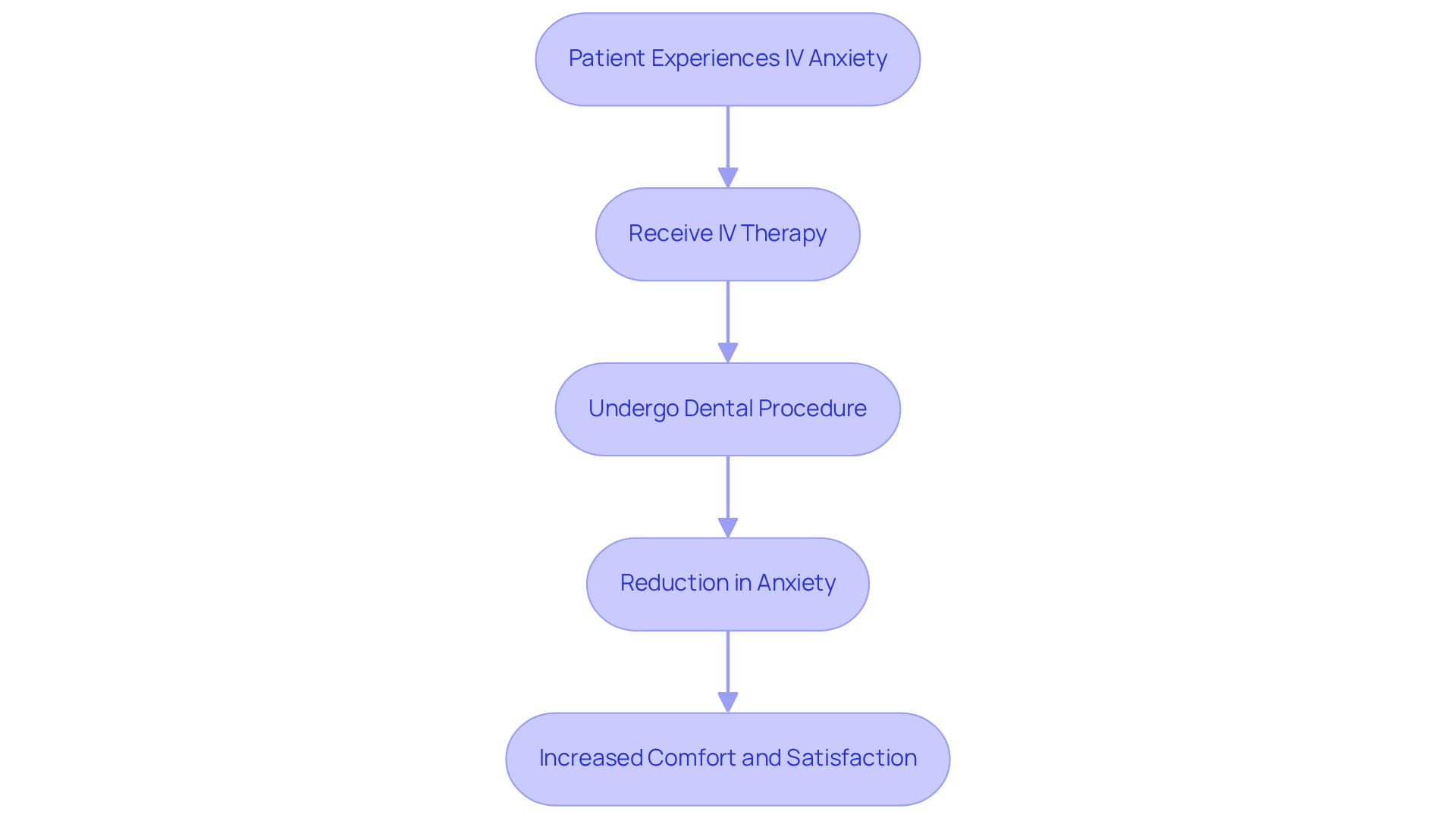
Mindfulness Techniques: Reducing Anxiety Before Dental Visits
We understand that visiting the dentist can be a source of iv anxiety for many. Incorporating mindfulness methods like deep breathing, meditation, and guided imagery can significantly reduce stress before your appointment. Imagine dedicating just a few minutes each day to focus on your breath, visualize a serene environment, or listen to calming music. These small practices can make a big difference.
One particularly effective technique is diaphragmatic breathing. This method helps ease iv anxiety before stressful procedures, allowing you to feel more centered and calm as you approach the clinic. In addition, these mindfulness practices not only ground you but also promote a sense of tranquility.
Research shows that engaging in mindfulness can lead to positive physiological changes. A review of over 200 studies highlights how these practices enhance emotional regulation and reduce stress responses. You’re not alone in this journey; many have found that by actively participating in these methods and expressing their concerns to medical staff, they can transform their experience into something more manageable and less intimidating.
So, why not give it a try? By embracing these techniques, you can take control of your dental visits and approach them with a newfound sense of calm, reducing any iv anxiety you may feel.
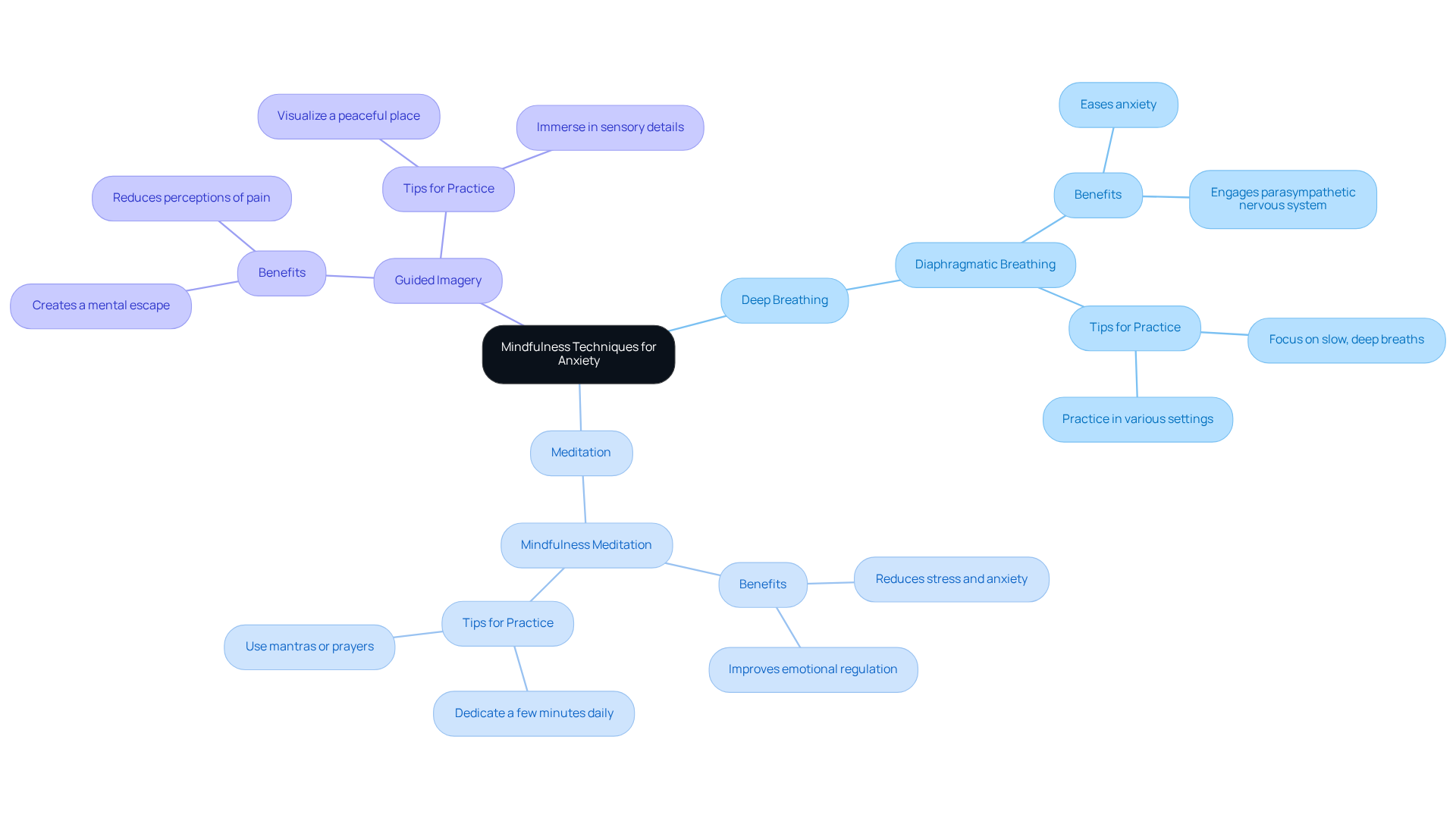
Open Communication: Discussing Concerns with Your Dentist
Patients deserve to feel empowered to share their fears and concerns with their dentist. When there’s a clear line of communication, dental professionals can better identify specific triggers of stress and tailor their approach to meet individual needs. This might mean offering detailed explanations of procedures, discussing sedation options, or even setting up a signal system for breaks during treatment. Such proactive communication not only fosters a supportive atmosphere but also significantly reduces stress levels.
Research shows that around 70% of individuals who voice their concerns feel more relaxed during their appointments. As Dr. Raghavendra Polineni wisely notes, “Addressing your concerns directly with your dentist is one of the most effective ways to manage iv anxiety.” By taking the initiative to express their worries, individuals can transform their visits to the clinic from intimidating experiences into manageable ones, ultimately leading to better oral health outcomes.
Moreover, practices that prioritize open dialogue often see enhanced satisfaction and compliance among patients. This underscores the vital role communication plays in oral care. We understand that navigating dental visits can be challenging, but remember, you’re not alone in this journey. By fostering a compassionate environment, we can work together to ensure your dental experience is as comfortable and stress-free as possible.
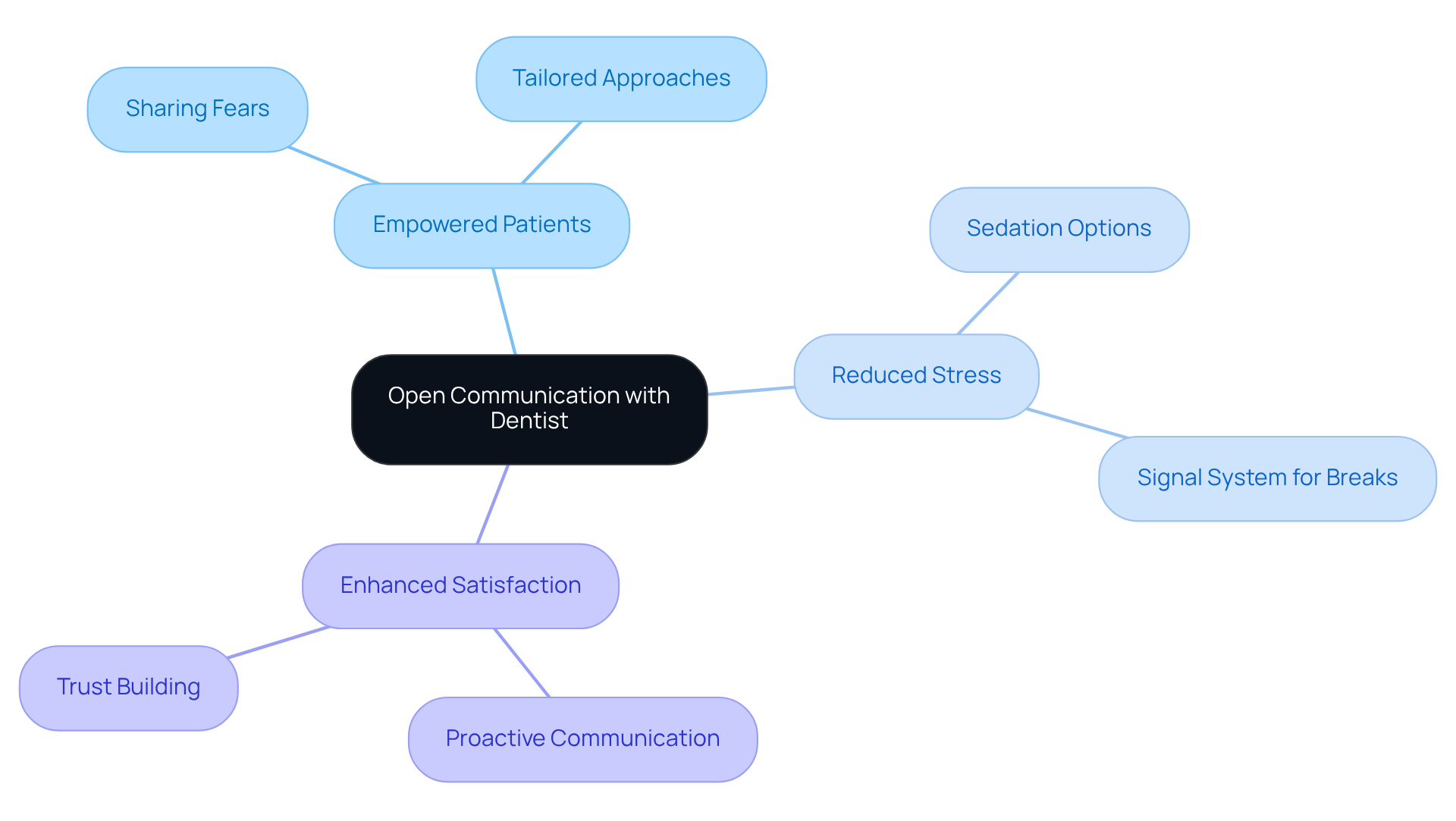
Sedation Options: Exploring Safe Choices for Dental Anxiety
For many individuals grappling with significant IV anxiety, exploring sedation options can truly transform their dental experience. We understand that the thought of dental procedures can be daunting, but knowing there are choices available can bring a sense of relief. Common options include:
- Nitrous oxide (often referred to as laughing gas)
- Oral sedatives
- Intravenous (IV) sedation
Each of these methods offers different levels of sedation and varying durations of effects, catering to individual needs.
Nitrous oxide is a gentle sedative that allows individuals to remain awake and alert while feeling relaxed. This makes it a great choice for those who experience mild stress during routine procedures. On the other hand, oral sedatives can promote deeper relaxation, often resulting in little to no memory of the procedure. This can be particularly beneficial for those with moderate anxiety or those undergoing more invasive treatments.
For individuals facing intense anxiety or requiring complex oral procedures, IV anxiety sedation can be especially effective. This method provides quick and controlled sedation to address IV anxiety, keeping individuals in a twilight state where they can respond to the dental team but are unlikely to remember the procedure afterward. Furthermore, recent advancements in sedation techniques, including the use of virtual reality (VR) and augmented reality (AR) for patient education, have significantly enhanced safety and effectiveness. Many practices now utilize state-of-the-art monitoring equipment to ensure your well-being throughout the process.
Discussing these sedation options with a qualified dentist can empower you, helping you feel more in control and less anxious about your upcoming procedures. Did you know that around 30% of pediatric dentists use some form of sedation? Additionally, a significant percentage of adults—estimated between 30-80%—experience IV anxiety related to oral care. Understanding and selecting the right sedation method is crucial for a positive experience. Moreover, 41% of patients admit to missing their check-ups due to stress, highlighting the importance of these alternatives in preserving oral health.
You’re not alone in this journey. By taking the time to explore these options and communicate with your dentist, you can find a solution that works for you, paving the way for a more comfortable dental experience.

Pre-Appointment Preparation: Strategies to Calm Your Nerves
Preparing for a dental visit can often be a source of iv anxiety for many. We understand that experiencing iv anxiety about these appointments is common, but there are effective strategies to help calm your nerves and make the experience more pleasant.
-
Create a Calming Checklist: Consider bringing items that promote relaxation, such as headphones for music, a stress ball, or a favorite book. These distractions can help shift your focus away from thoughts that provoke iv anxiety.
-
Schedule Wisely: Opt for appointments during less busy times to create a calmer environment. This can lessen the overall stress of the visit, promoting a more relaxed atmosphere.
-
Practice Relaxation Techniques: Engage in relaxation exercises, such as yoga or light exercise, the day before your appointment. Methods like diaphragmatic breathing and progressive muscle relaxation can assist in reducing stress levels related to iv anxiety and fostering a sense of well-being.
Utilize mindfulness practices, such as guided imagery or meditation, to center your thoughts and alleviate iv anxiety before appointments. These techniques can help you visualize a positive oral experience.
- Talk to Your Dentist: Open dialogue about your concerns can help customize the visit to your needs. Discussing your worries related to iv anxiety enables the care team to offer extra support and reassurance, emphasizing the significance of patient-provider communication.
Avoid stimulants such as caffeine and high-sugar foods before your visit, as these can heighten symptoms of iv anxiety. Instead, focus on a balanced meal to maintain steady energy levels.
- Engage in Positive Visualization: Before your appointment, envision a successful and serene visit to the dentist. This mental rehearsal can help reduce fear and build confidence.
By applying these approaches, you can establish a more pleasant experience at the dentist. Remember, you’re not alone in this journey, and with time, these strategies can lead to improved oral health results and decreased stress.
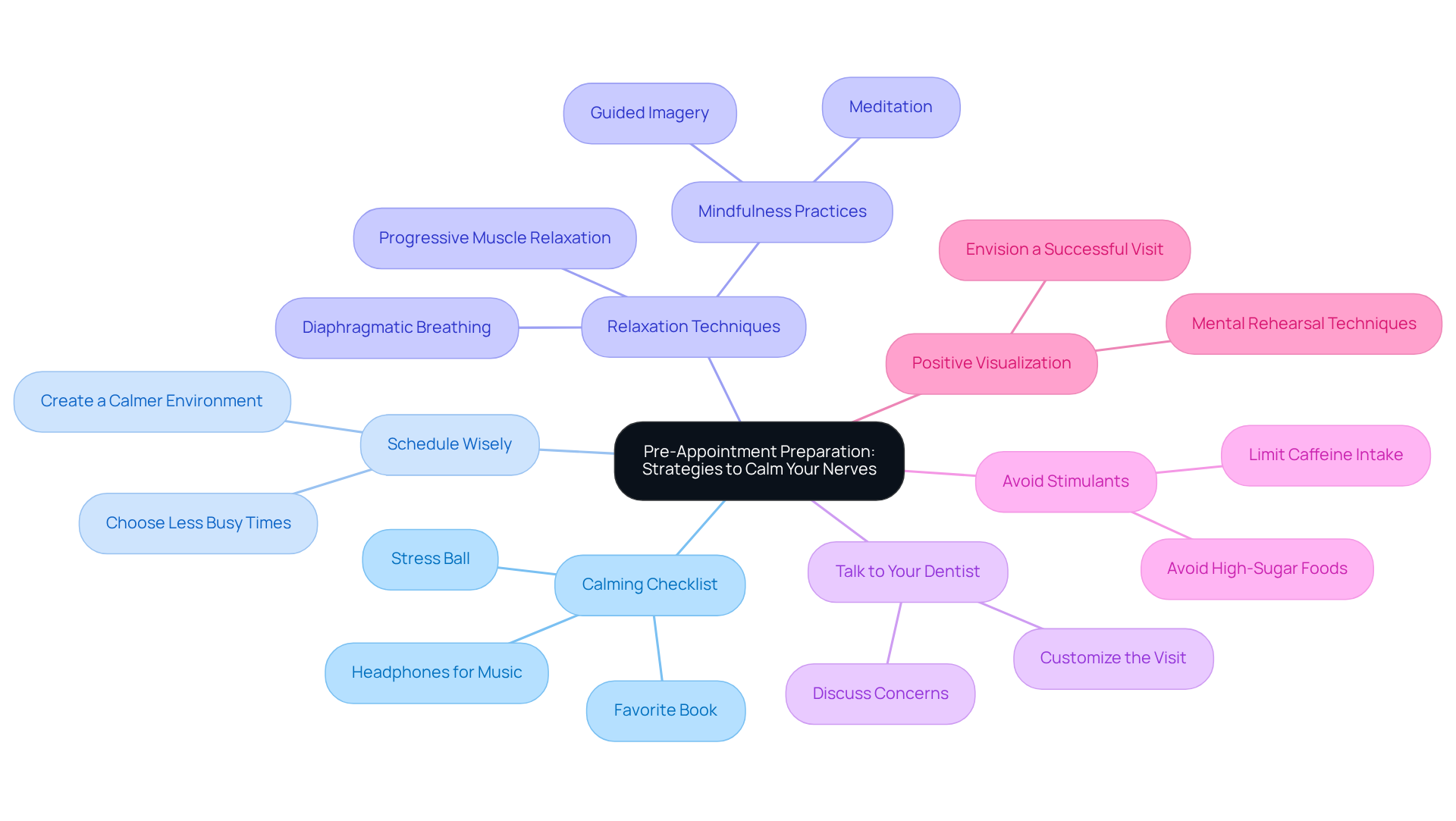
Distraction Techniques: Keeping Your Mind Occupied During Procedures
We understand that dental visits can be stressful, but distraction methods can play a vital role in easing that anxiety during oral procedures. Patients can enhance their comfort by:
- Bringing headphones to listen to their favorite music or audiobooks
- Watching videos on their devices
- Engaging in light conversation with the dental staff
Open dialogue about fears and past experiences can also help in managing stress.
In addition, many clinics now offer virtual reality headsets or soothing visuals, allowing individuals to immerse themselves in a calming environment. This can significantly redirect attention from the procedure at hand. Research shows that music distraction can lead to a notable decrease in stress levels, with a standardized mean difference of -0.50 reported in various studies. Furthermore, an impressive 96% of individuals expressed a desire to revisit virtual reality simulations, highlighting its effectiveness as a non-drug approach to alleviate oral distress.
Moreover, a soothing workplace atmosphere and supportive healthcare teams contribute to reducing stress. By employing these distraction techniques, individuals can effectively lessen their awareness of discomfort and unease related to iv anxiety, resulting in a more pleasant experience at the dentist. Remember, you’re not alone in this journey, and there are many ways to make your visit more comfortable.
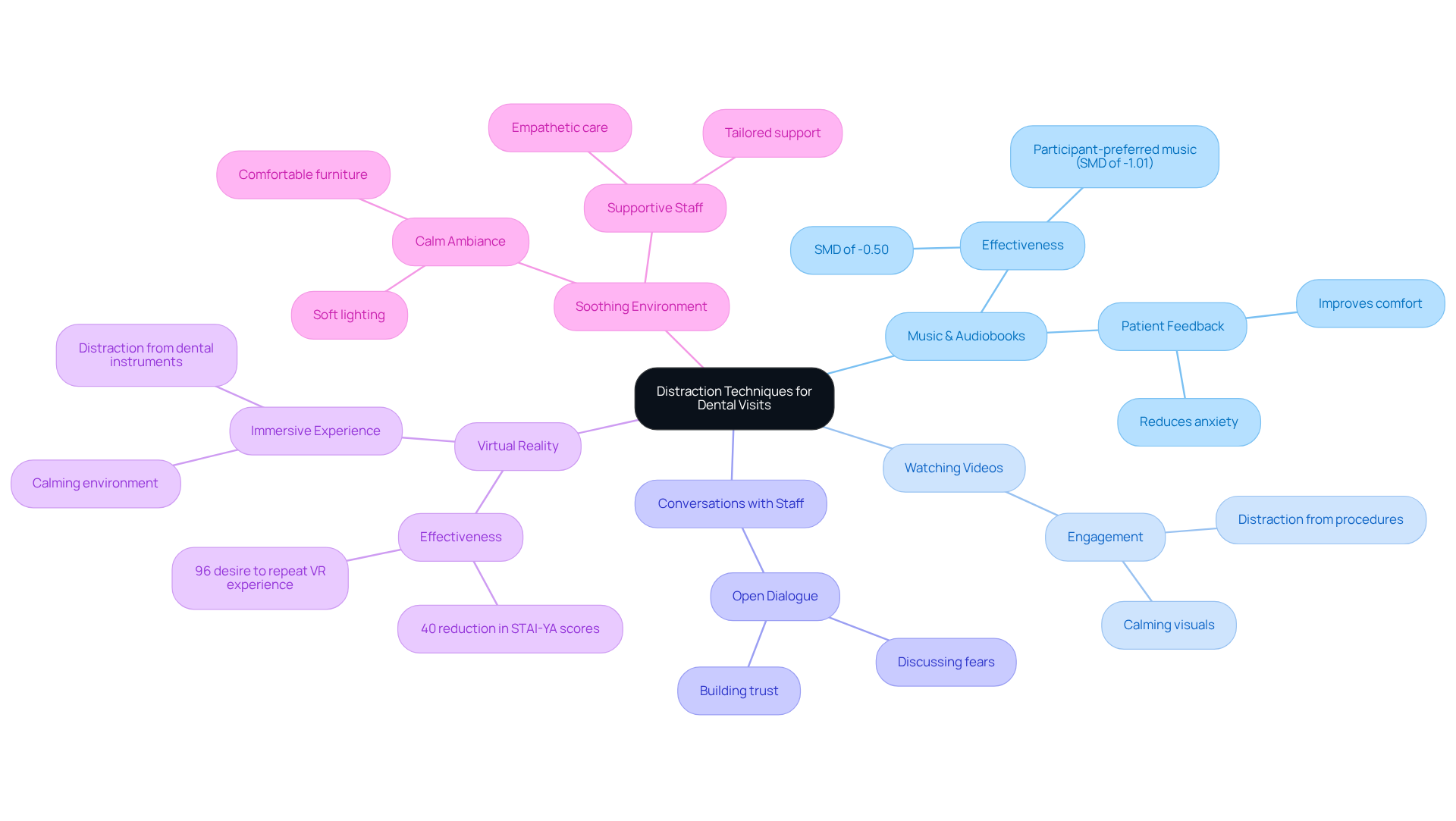
Post-Procedure Support: Ensuring Comfort After Dental Treatments
Post-procedure support is crucial for ensuring your comfort and addressing any concerns you might have after dental treatments. We understand that effective aftercare can significantly influence your overall satisfaction and iv anxiety levels. In fact, studies show a notable increase in satisfaction with postoperative care over the last five years, highlighting just how vital aftercare is in enhancing your experience.
Clear aftercare instructions, scheduled follow-up appointments, and accessible support resources are essential components of this process. You should feel empowered to reach out to your dental team with any questions or concerns, reinforcing that your well-being is a priority even after the procedure.
As one expert wisely noted, “Effective post-operative care can significantly enhance recovery, minimize discomfort, and prevent complications.” Moreover, it’s important to recognize that factors like pain management and emotional support play a significant role in your overall satisfaction. This further emphasizes the need for a holistic approach that alleviates iv anxiety and fosters a supportive environment, allowing you to actively engage in your recovery journey.
You’re not alone in this journey, and with the right support, you can navigate the post-treatment phase with confidence.
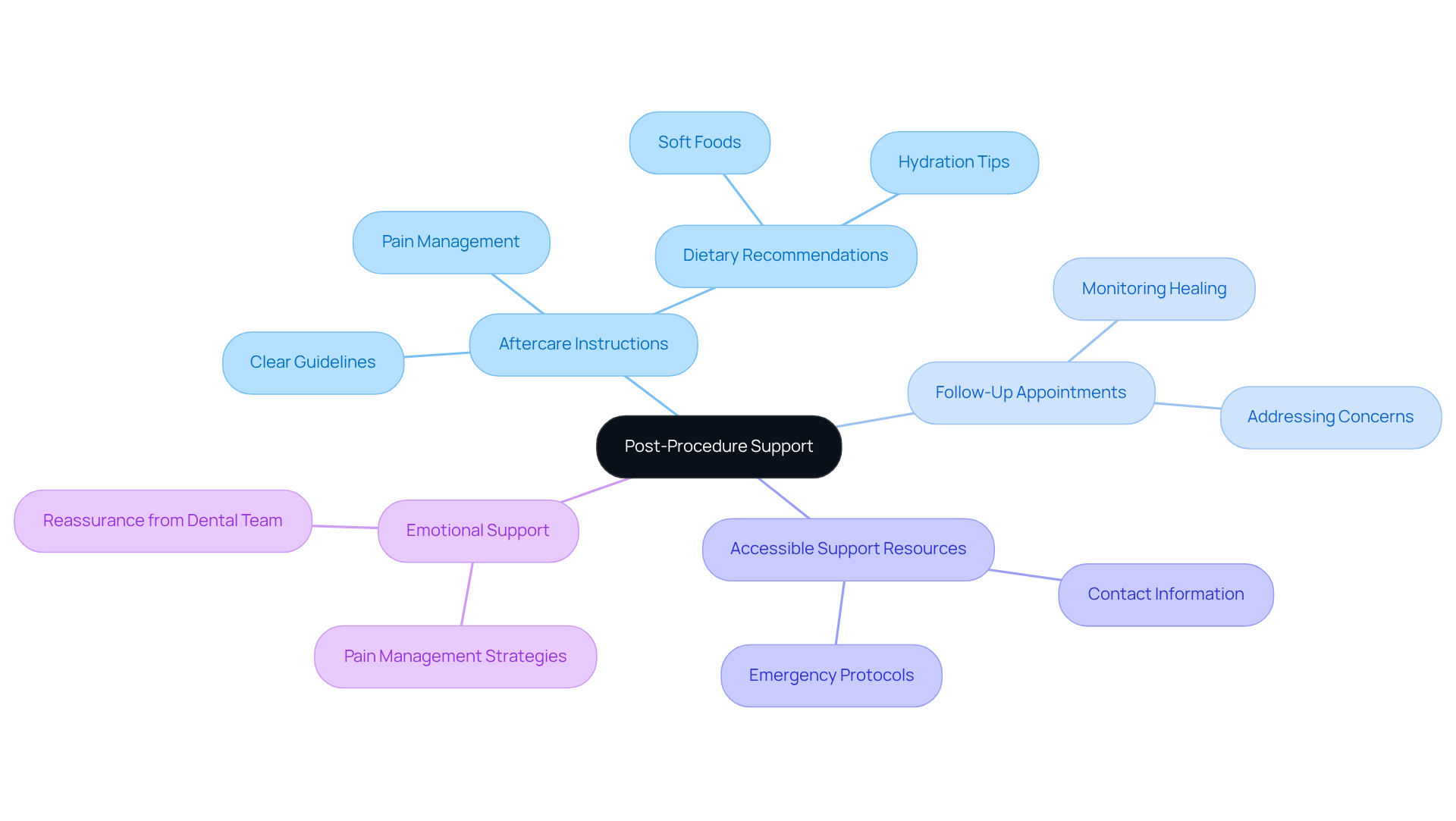
Conclusion
Managing IV anxiety during dental visits is crucial for fostering a positive experience and ensuring that individuals receive the oral care they need without overwhelming stress. We understand that dental visits can be daunting, but by integrating compassionate solutions like IV therapy, mindfulness techniques, open communication with dental professionals, and effective distraction methods, patients can significantly reduce their anxiety levels. These strategies not only enhance comfort during procedures but also encourage a proactive approach to oral health.
In addition, the article highlights several key strategies for managing IV anxiety:
- The benefits of IV therapy for relaxation
- The importance of mindfulness practices
- The role of open dialogue with dental teams
- Exploring various sedation options
- Engaging in pre-appointment preparations
These components can empower individuals to face their dental visits with confidence. Post-procedure support further emphasizes the need for a holistic approach to care, ensuring that patients feel supported throughout their journey.
Ultimately, addressing dental anxiety is not just about managing fear; it’s about transforming the overall experience into one that is manageable and even positive. By embracing these strategies and fostering a supportive environment, individuals can take control of their dental health. You’re not alone in this journey—every effort made today can lead to a healthier and more confident smile tomorrow. Taking the first step towards a more comfortable dental visit is essential, and we’re here to support you every step of the way.
Frequently Asked Questions
What is IV therapy and how does it help with dental anxiety?
IV therapy at CT Medical Weight Loss & Beyond delivers soothing nutrients and medications directly into the bloodstream, promoting relaxation and comfort during oral procedures. It effectively addresses the psychological challenges associated with dental visits, allowing individuals to receive essential treatments without excessive fear or discomfort.
How common is IV anxiety among adults during dental visits?
Research indicates that approximately 42% of adults experience moderate IV anxiety, while 12% face extreme IV anxiety during dental visits.
What are the benefits of IV therapy beyond relaxation?
Beyond promoting relaxation, IV therapy fosters a nurturing environment that encourages individuals to seek necessary oral care. Patient testimonials highlight increased comfort and reduced stress during visits, showcasing its transformative impact.
What mindfulness techniques can help reduce anxiety before dental visits?
Mindfulness techniques such as deep breathing, meditation, and guided imagery can significantly reduce stress before dental appointments. Engaging in these practices helps ground individuals and promotes a sense of tranquility.
What is diaphragmatic breathing and how does it assist with IV anxiety?
Diaphragmatic breathing is a mindfulness technique that helps ease IV anxiety before stressful procedures. It allows individuals to feel more centered and calm as they approach their dental appointments.
What does research say about the effects of mindfulness on anxiety?
Research shows that engaging in mindfulness practices can lead to positive physiological changes, enhancing emotional regulation and reducing stress responses, which can help manage anxiety related to dental visits.
How can individuals take control of their dental visits to reduce anxiety?
By actively participating in mindfulness techniques and expressing their concerns to medical staff, individuals can transform their dental experience into something more manageable and less intimidating.



